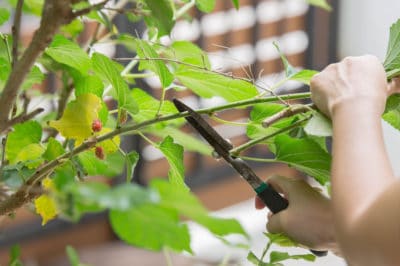When to Prune Your Mulberry
Your mulberry tree will show some signs that it’s ready to be pruned. These include:
- All the leaves have fallen off the tree.
- The tree has dead branches and twigs.
- Your plant is not growing straight, or branches are tangled.
- There are no signs of new growth.
While it’s best to wait until the tree has lost its leaves, don’t prune if the temperature drops below 50 degrees Fahrenheit; cold weather makes it difficult for the tree to seal its wounds and heal.
One of the best times to prune your mulberry is in early spring, when the temperatures are warmer but no buds or green shoots have begun showing.
The Why of Pruning Makes a Difference
Your desired outcome for the project will determine how you prune, and how often.
Are you attempting to encourage a large, broad, tree to create shade, house birds (and even a squirrel or two), and even provide a place to house your compost bin? If so, you’ll only prune minimally (dead, broken, entangled, or distorted branches) and only every few years.
If your goal in pruning is to maximize fruit production, and keep the berries in easy reach, then you’ll prune annually, with an eye toward preserving the blooms and fruited areas of the previous season. Cut from the outside with an eye toward keeping berry growth in the lower portion of the plant where you can reach it.
A mulberry tree that is overgrowing its space may need a pollarding technique to control size, but it’s probably better to have this done professionally. Incorrect pruning to reduce the size of a tree can result in your tree being damaged and unattractive, or becoming susceptible to disease.
To encourage a large tree to give plenty of shade, you should prune every two to three years. Cut minimally, using a good, sharp, clean pair of pruning shears and tree loppers. Take off any branches or twigs that are dead or broken, remove bent and misdirected branches, and avoid cutting anything over two inches in diameter.
